A corner study table can be one of the most efficient furniture choices you’ll ever make, especially in Singapore homes where every square metre counts. When set up properly, it transforms unused space into a productive, comfortable, and visually appealing area. But when done wrong, it can turn into a cramped, underutilised spot that collects clutter.
At Ergoworks, we’ve helped countless homeowners and professionals design ergonomic and space-smart setups that suit both their work style and home environment. Over the years, we’ve seen recurring mistakes people make when setting up their corner study tables — errors that affect comfort, functionality, and even productivity. By avoiding these pitfalls, you can ensure your investment works hard for you for years to come.
Corner Study Table Setup Mistakes You Need to Avoid
Below are the common mistakes people make when decorating their corner study table.
1. Choosing the Wrong Corner
One of the most fundamental mistakes is assuming any corner will do. The wrong location can make your study table dark, stuffy, or noisy, which isn’t ideal for concentration.
A corner directly facing a wall without natural light can feel oppressive, while one near the kitchen or a busy hallway may expose you to constant noise and distractions.
Better approach:
-
Pick a corner with some access to natural light; place the table so the sunlight is indirect to avoid glare.
-
Consider noise levels throughout the day. Even a quiet spot in the morning might become busy in the afternoon.
-
Check for proximity to electrical outlets to avoid running long, unsightly extension cords.
2. Ignoring Ergonomics

Many people adjust their corner study table and chair purely based on aesthetics, but neglecting ergonomics can cause long-term discomfort.
A table that’s too high will make your shoulders tense, while one too low forces you to hunch. Similarly, a chair without lumbar support can cause back pain after hours of sitting.
Better approach:
-
Table height should allow your elbows to rest at a 90-degree angle while typing or writing.
-
The top of your monitor should be at or slightly below eye level.
-
Use an adjustable chair with proper lumbar support and pair it with a footrest if your feet don’t touch the ground comfortably.
3. Overcrowding the Surface
Your corner table may seem spacious at first, but overloading it with books, files, and gadgets can make it feel cramped quickly.
An overcrowded workspace not only looks messy but also makes it harder to find what you need, slowing down your work or study sessions.
Better approach:
-
Keep only essential items on the desk: laptop, monitor, notebook, and a small set of stationery.
-
Use wall-mounted shelves above the table for extra storage.
-
Store non-essential items in labelled boxes or drawers to keep the surface clear.
4. Poor Lighting Setup
Lighting can make or break a workspace. Poor lighting leads to eye strain, headaches, and reduced productivity.
Many people place their corner study table in a spot that looks cosy but has insufficient illumination, especially in the evenings.
Better approach:
-
If the corner is dim, invest in an adjustable LED desk lamp with different brightness settings.
-
Position the lamp on the opposite side of your dominant hand to prevent shadows while writing.
-
Combine ambient room lighting with task lighting for balance.
5. Forgetting Cable Management
Cables from computers, chargers, and desk lamps can quickly tangle in a corner setup, creating clutter and even hazards.
Without proper cable management, adjusting your table or cleaning the area becomes a chore, and tripping hazards are more likely.
Better approach:
-
Use adhesive cable clips or under-desk trays to route cords neatly.
-
Bundle excess cable length with Velcro straps to prevent tangling.
-
Opt for wireless peripherals where possible to reduce cable load.
6. Not Measuring the Space Properly
Impulse buying without measuring is a recipe for disappointment. You may end up with a table that overwhelms the space or one too small to be useful.
Better approach:
-
Measure both wall lengths forming the corner, as well as the available depth.
-
Account for legroom and chair movement space.
-
Remember clearance for drawers, shelves, and any nearby doors or furniture.
7. Overlooking Storage Needs

Some corner study tables look sleek but lack practical storage options, leading to clutter.
Better approach:
-
Choose a design with built-in drawers or shelves underneath.
-
Add floating shelves or a pegboard above the table for vertical storage.
-
Keep storage proportional. Too much can overwhelm a small corner
8. Ignoring Aesthetics
Functionality matters, but aesthetics influence how much you enjoy using the space. A table that clashes with the room can make the whole area feel mismatched.
Better approach:
-
Select finishes and colours that complement your existing décor.
-
Add subtle décor elements like a desk plant, framed photo, or tasteful lamp.
-
Maintain balance. Too much decoration will defeat the purpose of a clean, focused study area.
9. Blocking Airflow

Corners can sometimes be the warmest, most stagnant parts of a room, especially in tropical climates.
Better approach:
-
Position your table so air from windows or fans circulates naturally.
-
Avoid placing it directly under strong air-conditioning, which can cause discomfort during long hours of work.
10. Not Planning for Future Needs
Your study habits and equipment needs may change over time. Many people lock themselves into a setup that has no flexibility for upgrades.
Better approach:
-
Leave space around your corner table for adding shelves, extra screens, or even converting it into a shared workstation.
-
Choose a modular or adjustable table design that can adapt as your needs evolve.
Ideal Corner Study Table Setup Checklist
|
Setup Element |
What to Check |
Why It Matters |
|
Location |
Quiet corner with indirect natural light and nearby power outlet |
Minimises distractions, reduces eye strain, and avoids messy cables |
|
Table Size |
Fits the corner without blocking pathways; depth of at least 60–75 cm |
Ensures comfort, legroom, and functionality |
|
Ergonomics |
Elbows at 90°, monitor at eye level, feet flat or on footrest |
Prevents posture-related pain and improves comfort |
|
Storage |
Built-in drawers or vertical shelves |
Keeps workspace tidy and maximises available space |
|
Lighting |
Adjustable desk lamp + ambient room light |
Reduces eye strain and keeps workspace well-lit at all times |
|
Cable Management |
Cable clips, trays, or wireless devices |
Prevents hazards, tangling, and visual clutter |
|
Airflow |
Good ventilation without direct air-con blast |
Keeps the space comfortable for long work sessions |
|
Décor & Style |
Matches room aesthetics without over-decorating |
Creates a pleasant environment that encourages focus |
|
Future Flexibility |
Space for extra monitor, shelves, or accessories |
Ensures your setup can adapt to changing needs |
Getting the Most Out of Your Corner Study Table
A corner study table isn’t just a piece of furniture. It’s an investment in your productivity and comfort. Avoiding these mistakes will ensure that your setup is not only efficient but also pleasant to use day after day.
If you want expert guidance in choosing and setting up the perfect table for your space, visit Ergoworks. Our range of ergonomic corner tables and workspace solutions are designed for Singapore’s unique home and office needs, blending smart design, durability, and style so you can work at your best.
FAQs About Corner Study Tables
What’s the ideal size for a corner study table?
For comfort, aim for a depth of 60–75 cm and at least 120 cm length on each side. This ensures enough space for a laptop, documents, and comfortable arm movement.
Can I use a corner study table for both work and hobbies?
Yes, but separate your tools and materials for each purpose. For example, store craft supplies in boxes you can put away when it’s time to work.
Is a corner study table suitable for small rooms?
Absolutely. Its design maximises corner space, leaving more open floor area. Just choose a compact yet functional model with vertical storage options.
How do I make a corner study table look stylish?
Coordinate it with your room’s colour scheme, add personal touches like plants or art, and keep the surface clutter-free for a clean look.
Should I place my corner study table near a window?
Yes, if possible. Natural light boosts mood and focus, but position the table to avoid direct glare on screens.


![Falcon Chair [Free Footrest Worth $150]](http://ergoworks.com.sg/cdn/shop/files/Falcon_Chair_Main_Image.png?v=1757482801&width=104)
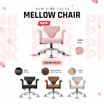
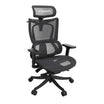


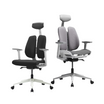

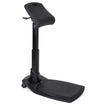

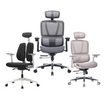
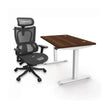

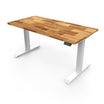
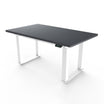
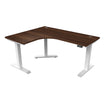
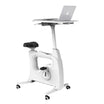

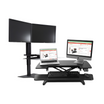
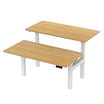
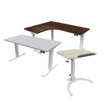





![Impact Ergonomic Kids Study Desk [Length Options Available]](http://ergoworks.com.sg/cdn/shop/files/KidDeskMainImageFinal.png?v=1764215536&width=104)
![Impact Ergonomic Kids Desk & Chair Set [FREE Spindle bookshelf & Eye Care Lamp Worth $318.90] [Chair & Length Options Available]](http://ergoworks.com.sg/cdn/shop/files/Kids_Desk_Nov_Promo_Square_Shopify.jpg?v=1761955288&width=104)




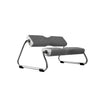
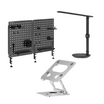


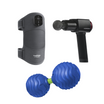
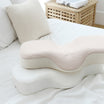
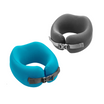

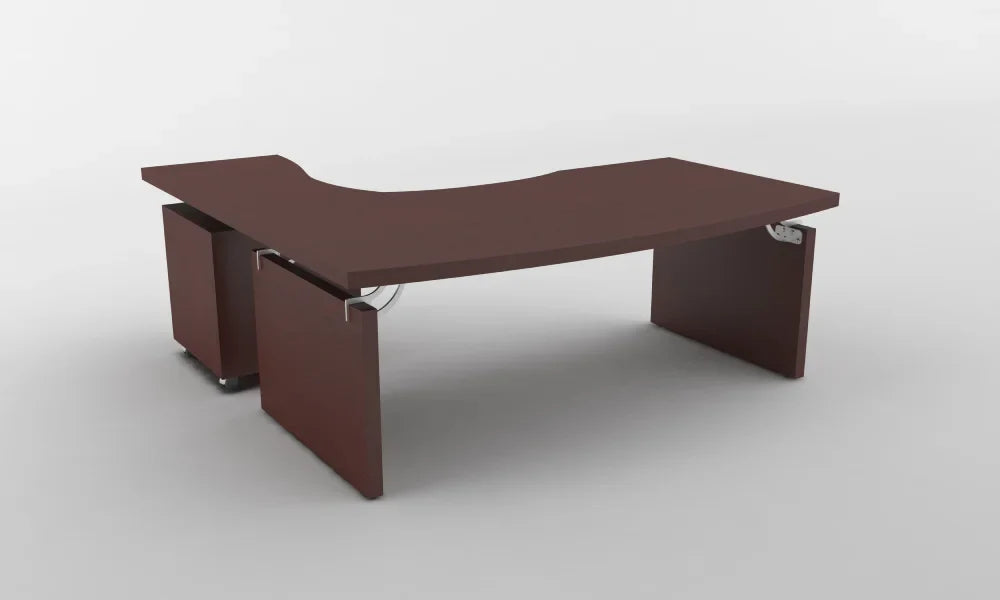


Leave a comment
This site is protected by hCaptcha and the hCaptcha Privacy Policy and Terms of Service apply.